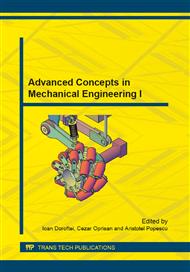p.441
p.447
p.453
p.459
p.465
p.471
p.477
p.483
p.489
Role of Surface Industrial Finishing Process of Joint Implant UHMWPE on their Tribological Behaviour
Abstract:
Joint implants have as bearing couples metal on metal, ceramic on metal and metal on polyethylene. The most widely used bearing couple for artificial joint systems is the combination of a polyethylene (PE) acetabular liner and a cobalt–chromium (Co–Cr) alloy femoral head. Although highly used, it is known that wearing of the polyethylene part of total joint implants is the primary cause of premature failure of total joint replacements [1]. Polyethylene particles tend to migrate into the joint creating inflammation, ostelysis and, in the end the loss of the implant. Industrials use different method for the surface finishing process of the polyethylene part of joint implants that lead to different types of surface morphologies. In this study, using atomic force microscopy technique and tribological methods, we have investigated the influence of polyethylene surface morphology on mechanical properties, degradation and friction. Results have shown that polyethylene surfaces obtained by high speed turning machine lead to low friction coefficient and less degradation of the surface during friction test.
Info:
Periodical:
Pages:
465-470
Citation:
Online since:
October 2014
Authors:
Keywords:
Price:
Сopyright:
© 2014 Trans Tech Publications Ltd. All Rights Reserved
Share:
Citation:


